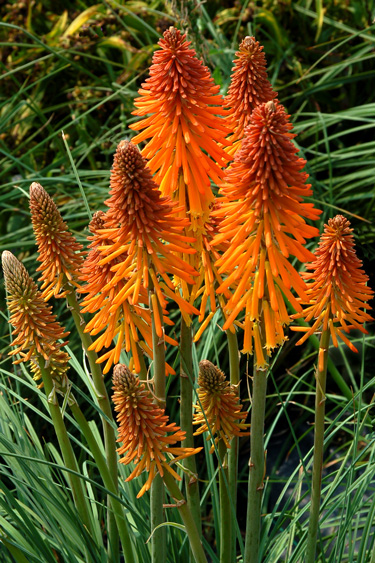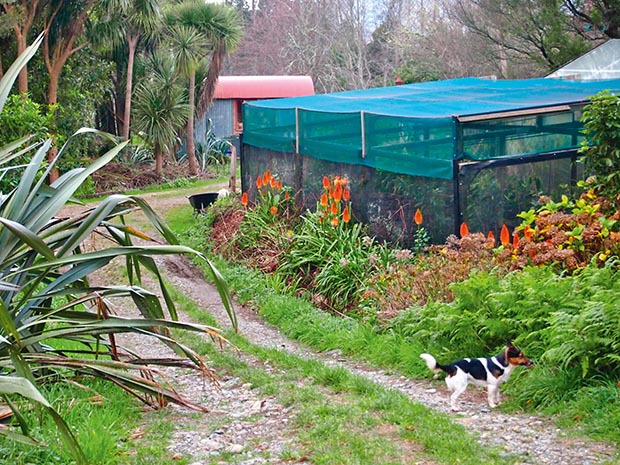Red Hot Poker Plant For Sale Nz
Introduction
- Red Hot Poker Plant For Sale Nz By Owner
- Red Hot Poker Plant For Sale Nz Craigslist
- Red Hot Poker Plant For Sale Nz Dollars
Red Hot Poker Plants Red hot pokers are popular, easy to grow perennial plants that are widely known for their striking flowers atop tall, strong stems. Also known as torch lilies and kniphofia, these hardy plants also provide great structure with their long, blade like foliage. Kniphofias are better known by their common name, ‘Red Hot Pokers’. The Living Fashion range includes a new selection of dwarf Red Hot Pokers. These are better performed than their common big brother in that these kniphofias flower for an extended period and more abundantly, in fact from Summer right through until the first frosts. Kniphofia might have had a better lot in the life of NZ gardens if we called them by some of their other common names. Knofflers sound so much more whimsical, torch lilies more exotic but alas we usually refer to them as the less attractive red hot pokers and treat them as low grade roadside plants. Traditionally the red hot pokers of my youth flowered in mid-to-late winter, but these versatile plants which have been well-hybridised, now bloom through summer and range in colour from red to yellow, orange and cream. The plant is tolerant of drought conditions, likes a well-drained soil and will tolerate more than a light frost.
Kniphofia (family Xanthorrhoeaceae), commonly known as red hot poker, originate from Africa. Kniphofia are fast growing perennials that prefer full sun and well-draining soil. The showy flowers attract birds and last for a long time which makes them a popular garden plant for New Zealand gardens.

The aim of this trial was to identify the top performing Kniphofia species or cultivars for Auckland conditions. These would also be added to the African Garden at Auckland Botanic Gardens. The key objective was to identify long flowering Kniphofia with clean foliage that are relatively resistant to snail and thrip damage and black spot.
Methods
Kniphofia were planted 26th November 2013. Several additions to this trial were planted in autumn 2014. Kniphofia require plenty of space and were 40 cm apart. All twenty-one Kniphofia cultivars were represented by three individuals, but only one each of the five Kniphofia species were planted.
Plants were grown in full sun, bark mulch and no fertiliser was applied at time of planting. Management of plants during the trial included one late winter cut back of two out of three of the cultivars, leaving the third plant as a comparison for their growth response following the cut back (mid-August 2014). Deadheading occurred only when seeds turned brown.

Plants were assessed quarterly during flowering for pest and disease, specifically snail and thrip damage and black ink spot (Fig 1). Flowering was recorded weekly for development of buds, flowers and seeds. Overall size of the plant was measured for across the widest part of the foliage of all three plants then averaged. We also measured foliage height (cm) from the base of plant to highest point of foliage three plants then averaged. External evaluations were conducted in December 2014 and March 2016. This trial ran for three years and concluded at the end of July 2016.
Figure 1 Black ink spot on foliage of Kniphofia infecting foliage and stems
Results and conclusions
From this trial, five cultivars were assessed as star performers by scoring an 8 or higher on the ABG rating system which is the threshold above which we recommend to Auckland gardeners (Table 1). They had long flowering periods and were relatively pest and disease free. Species were included in this trial as a comparison with commercially available cultivars. Their performance was variable although some scored a high rating. They are excluded from our list of recommendations as they are not generally commercially available. Star performers and species are now displayed in the ABG African Garden. All cultivars recommend are commercially available. Four cultivars in this trial (K. ‘Ernest Mitchell’, K. ‘Winter Cheer’, K. ‘Shining Sceptre’ and K. ‘Pineapple Popsicle’) scored very highly in all categories but because they scored more than 25% black ink spot their overall rating was dropped.
Kniphofia | Flowering & colour | Clump diameter by height (cm) | Habit/use | Overall rating |
K. ‘Border Ballet’ | Oct to May. Peak flowering mid-Dec. Mixed flower colours | 15 x 26 | Deciduous, compact, clump forming. | 6 |
K. ‘Butterscotch’ | March to June. Yellow flower | 34 x 67 | Large, tall evergreen perennial | 8 star performer |
K. ‘Charles Reader’ | Mid-march to Dec. Peak flowering June. Orange/yellow flowers. | 44 x 80 | Suitable for a back border, very vigorous. Evergreen | 8 star performer |
K. ‘Coral Comet’ | March to May. Peak flowering Dec. Deep orange flowers | 35 x 47 | Tidy, evergreen perennial | 9 star performer |
K. ‘Ember Glow’ | Jan to March. Orange flower | 26 x 32 | Deciduous, dwarf perennial | 6 |
K. ‘Ernest Mitchell’ | Mid-August to Dec. Yellow flower | 33 x 58 | Evergreen, robust perennial | 7 |
K. ‘Fireglow’ | Mid-Nov-May. Orange flower | 20 x 30 | Deciduous, dwarf perennial | 7 |
K. ‘Green Jade’ | Did not flower during this trial | 13 x 25 | Deciduous perennial | 4 poor performer |
K. ‘John May’s Form’ | Very sporadic flowering and few flower stems. Orange/yellow flowers. | 36 x 36 | Caulescens type. Evergreen | 5 poor performer |
K. ‘Lemon Fizz’ | Jan to April, Aug to Dec. Peak flowering Dec. Lemon yellow flowers. | 37 x 52 | Sparse foliage. Semi-deciduous | 7 |
K. ‘Little Maid’ | Dec to early May. Peak flowering March. Yellow flowers. | 19 x 22 | Very small, dwarf. Suitable for front border. Deciduous | 4 |
K. ‘Orangeade’ | Sept to June. Peak flowering late Dec. Pale orange flowers. | 32 x 40 | Tidy foliage. Evergreen | 6 |
K. ‘Peachy Cheeks’ | Nov to March. Peak flowering late Dec. Peach to yellow flowers. | 15 x 25 | Deciduous dwarf perennial with fine foliage | 5 |
K. ‘Percy’s Pride’ | March to May, mid-Oct to Dec. Yellow flower | 32 x 71 | Evergreen | 8 star performer |
K. ‘Pineapple Popsicle’ | Nov to March. Peak flowering Dec. Yellow flowers. | 27 x 47 | Compact, upright clump forming evergreen perennial | 7 |
K. ‘Shining Sceptre’ | March to May, Sept to Dec. Pale orange flowers | 44 x 58 | Compact, arching foliage. Evergreen | 7 |
K. ‘Tangerine’ | Sept to May. Peak flowering Nov to Dec. Vibrant orange flowers | 27 x 59 | Semi-deciduous | 8 star performer |
K. ‘Tawny King’ | Sept to Dec. Orange flowers. | 44 x 60 | Evergreen | 6 |
K. ‘Terracotta’ | Oct to Dec. Peak flowering Nov. Vibrant orange flowers. | 27 x 113 | Deciduous | 7 |
K. ‘Tiddlywinks’ | Jan to May, Nov to Dec. Red flowers. | 26 x 38 | Small. Deciduous | 6 |
K. ‘Winter Cheer’ | June. Red flowers. | 45 x 60 | Massive border plant. Semi-deciduous | 7 Important for cultivar conservation |
K. caulescens | n/a flowering. Red to yellow flowers. | n/a | Large, tall evergreen species | 8 not commercially available |
K. gracilis | Aug to Dec. Gold flowers. | 34 x 63 | Semi-deciduous | 7 |
K. hirsuta | Nov to Dec. Green and orange flowers. | 38 x 53 | Very tall evergreen species | 8 not commercially available |
K. linearifolia | March to April. Orange to yellow flowers. | 27 x 45 | Evergreen | 8 not commercially available |
K. rooperi | August. Yellow/orange flowers. | 73 x 79 | Large, tall evergreen species | 8 not commercially available |


Red Hot Poker Plant For Sale Nz By Owner
Kniphofia caulescens died early on in this trial, therefore no flowering records and plant size data is reported here. K. ‘Peachy Cheeks’ supplied might not have been correctly named as flowers were yellow rather than peach. Plants of K. ‘Green Jade’ did not do well with two plants dying before the end of the trial and not flowering.
Snail damage was noticed in mid-October on almost all cultivars but plants quickly recovered from damage. Kniphofia were relatively tolerant of frost, and many are deciduous. All Kniphofia in this trial had signs of black ink spot at some stage during the trial. Most Kniphofia in this trial had less than 25% of the plant affected by black ink spot (Fig 2).
Figure 2 Average percentages of black ink spot (2015-2016) on Kniphofia in ABG trial
Kniphofia are renowned for crossing and seeding out in gardens, therefore we recommend deadheading regularly after flowering but before seeds ripen. We pruned plants back in mid-winter and they grew back well. A late prune results in reduced flowering however this promotes healthy, clean foliage.
Red Hot Poker Plant For Sale Nz Craigslist
Acknowledgements
We would like to thank our external experts for helping evaluate this trial.
Red Hot Poker Plant For Sale Nz Dollars
This article cannot be republished elsewhere without consent from Auckland Botanic Gardens.